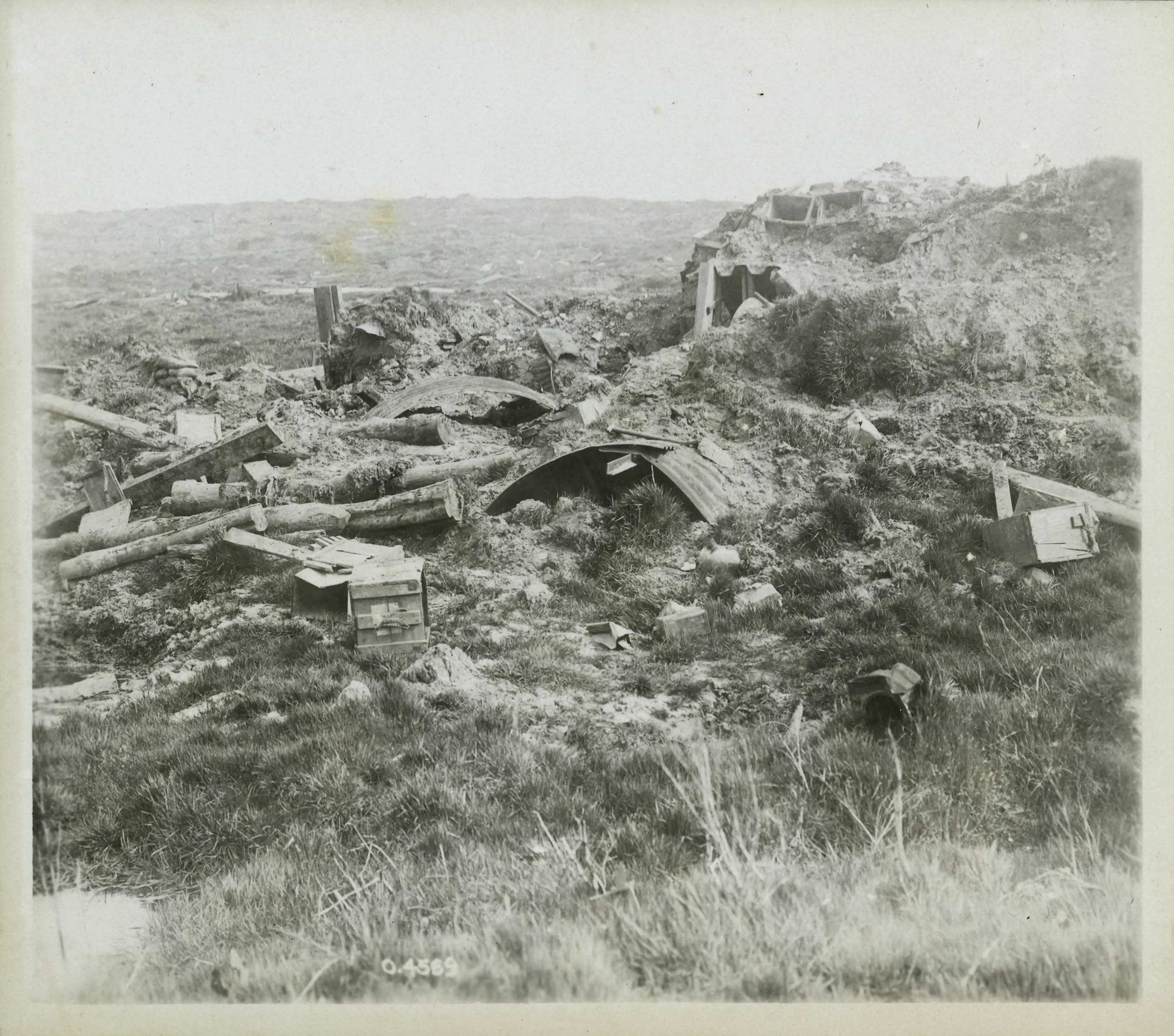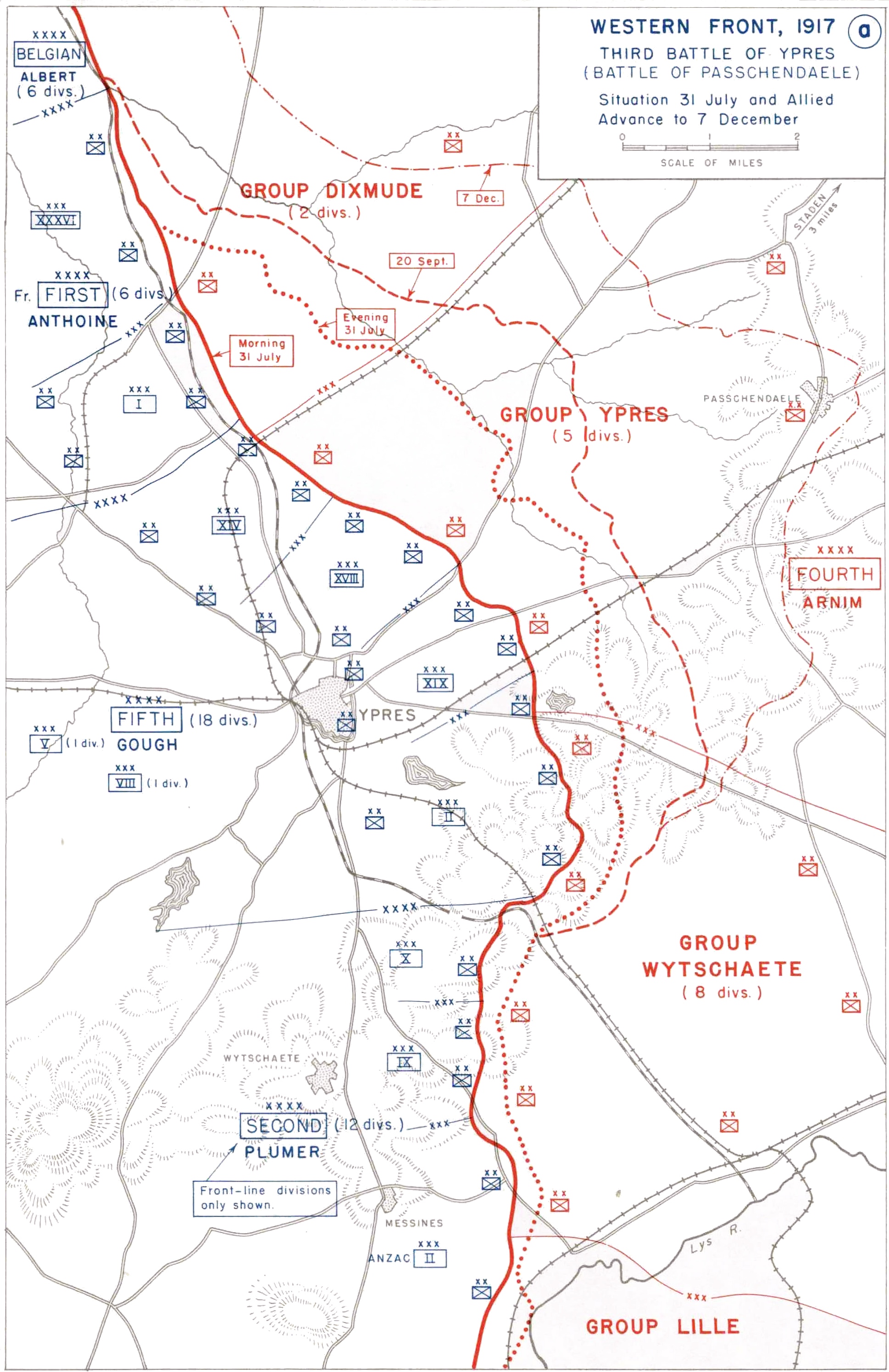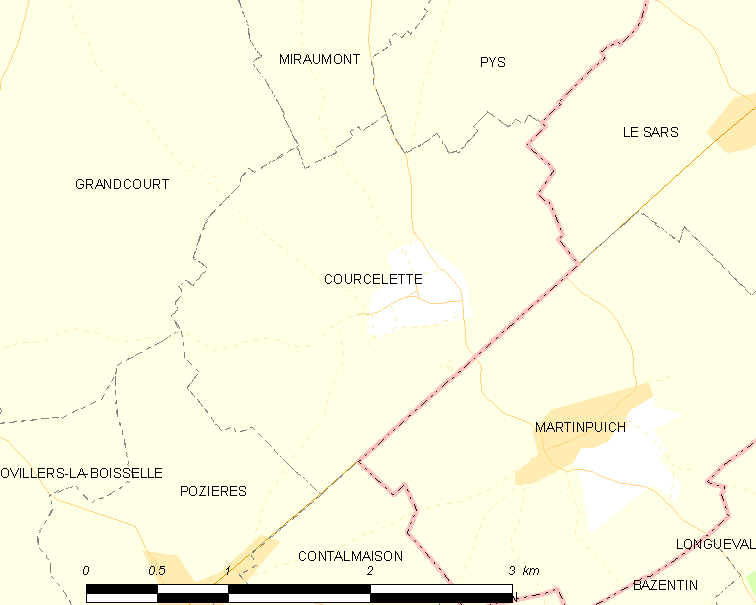|
5th Battalion, Canadian Mounted Rifles
The 5th Battalion Canadian Mounted Rifles were a mounted infantry unit of the Canadian Expeditionary Force (CEF) during World War I. The unit was raised from volunteers of the 7th and XIth (Canadian) Hussars from the Eastern Townships of Quebec. Formed in 1915, they were transported to England later that year. In 1916, they converted to an infantry battalion attached to the 8th Canadian Infantry Brigade, 3rd Canadian Division, CEF (later the Canadian Corps). The battalion saw action in France and Flanders between 1916 and 1918. Battle honours In 1929–31, well after World War I had ended, Canada assigned battle honours to those units involved in pivotal battles and campaigns during the war. The 5th Canadian Mounted Rifles were accorded the following battle honours: During the Battle of Passchendale, the 5th Canadian Mounted Rifles fighting strength was reduced by 60% in a single day. Two members of the battalion were awarded the Victoria Cross, the highest decoration f ... [...More Info...] [...Related Items...] OR: [Wikipedia] [Google] [Baidu] |
Canadian Expeditionary Force
The Canadian Expeditionary Force (CEF) was the expeditionary field force of Canada during the First World War. It was formed following Britain’s declaration of war on Germany on 15 August 1914, with an initial strength of one infantry division. The division subsequently fought at Ypres on the Western Front, with a newly raised second division reinforcing the committed units to form the Canadian Corps. The CEF and corps was eventually expanded to four infantry divisions, which were all committed to the fighting in France and Belgium along the Western Front. A fifth division was partially raised in 1917, but was broken up in 1918 and used as reinforcements following heavy casualties. Personnel Recruitment The Canadian Expeditionary Force was mostly volunteers; a bill allowing conscription was passed in August, 1917, but not enforced until call-ups began in January 1918 (''see'' Conscription Crisis of 1917). In all, 24,132 conscripts had been sent to France to take part ... [...More Info...] [...Related Items...] OR: [Wikipedia] [Google] [Baidu] |
Battle Of Mount Sorrel
The Battle of Mont Sorrel (''Battle of Mount Sorrel'', ''Battle of Hill 62'') was a local operation in World War I by three divisions of the British Second Army and three divisions of the German 4th Army in the Ypres Salient, near Ypres, Belgium, from 2 to 13 June 1916. To divert British resources from the build-up being observed on the Somme, the XIII (Royal Württemberg) Corps and the 117th Infantry Division attacked an arc of high ground defended by the Canadian Corps. The German forces captured the heights at Mount Sorrel and Tor Top, before entrenching on the far slope of the ridge. Following a number of attacks and counterattacks, two divisions of the Canadian Corps, supported by the 20th Light Division and Second Army siege and howitzer battery groups, recaptured the majority of their former positions. Background Located in the Ypres Salient, east of Ypres, Belgium and from Hill 60, the Battle of Mount Sorrel took place along a ridge between Hooge and Zwarteleen ... [...More Info...] [...Related Items...] OR: [Wikipedia] [Google] [Baidu] |
Battle Of Cambrai (1918)
The Battle of Cambrai, 1918 (also known as the Second Battle of Cambrai) was a battle between troops of the British First, Third and Fourth Armies and German Empire forces during the Hundred Days Offensive of the First World War. The battle took place in and around the French city of Cambrai, between 8 and 10 October 1918. The battle incorporated many of the newer tactics of 1918, in particular tanks. The battle witnessed over 300 tanks taking part. Gaining considerable ground in less than 36 hours. With about 2,000 more British casualties than German, which was light relative to earlier phases of the war. Battle There were three German lines, spanning some ; held by the 20th ''Landwehr'' and the 54th Reserve divisions, supported by no more than 150 guns. The weak defence was due to the Allied general offensive across the Western Front, and specifically in this sector, the rapid approach of the Canadian Corps, who had overwhelmed much stronger defences in the previous days. The ... [...More Info...] [...Related Items...] OR: [Wikipedia] [Google] [Baidu] |
Battle Of Passchendaele
The Third Battle of Ypres (german: link=no, Dritte Flandernschlacht; french: link=no, Troisième Bataille des Flandres; nl, Derde Slag om Ieper), also known as the Battle of Passchendaele (), was a campaign of the First World War, fought by the Allies against the German Empire. The battle took place on the Western Front, from July to November 1917, for control of the ridges south and east of the Belgian city of Ypres in West Flanders, as part of a strategy decided by the Allies at conferences in November 1916 and May 1917. Passchendaele lies on the last ridge east of Ypres, from Roulers (now Roeselare), a junction of the Bruges-(Brugge)-to-Kortrijk railway. The station at Roulers was on the main supply route of the German 4th Army. Once Passchendaele Ridge had been captured, the Allied advance was to continue to a line from Thourout (now Torhout) to Couckelaere (Koekelare). Further operations and a British supporting attack along the Belgian coast from Nieuport ( Nieuwpoo ... [...More Info...] [...Related Items...] OR: [Wikipedia] [Google] [Baidu] |
Battle Of The Canal Du Nord
The Battle of Canal du Nord was part of the Hundred Days Offensive of the First World War by the Allies against German positions on the Western Front. The battle took place in the Nord-Pas-de-Calais region of France, along an incomplete portion of the Canal du Nord and on the outskirts of Cambrai between 27 September and 1 October 1918. To prevent the Germans from sending reinforcements against one attack, the assault along the Canal du Nord was part of a sequence of Allied attacks at along the Western Front. The attack began the day after the Meuse-Argonne Offensive commenced, a day before an offensive in Belgian Flanders and two days before the Battle of St. Quentin Canal. The attack took place along the boundary between the British First Army and Third Army, which were to continue the advance started with the Battle of the Drocourt-Quéant Line, Battle of Havrincourt and Battle of Epehy. The First Army was to lead the crossing of the Canal du Nord and secure the northern fla ... [...More Info...] [...Related Items...] OR: [Wikipedia] [Google] [Baidu] |
Third Battle Of Ypres
The Third Battle of Ypres (german: link=no, Dritte Flandernschlacht; french: link=no, Troisième Bataille des Flandres; nl, Derde Slag om Ieper), also known as the Battle of Passchendaele (), was a campaign of the First World War, fought by the Allies against the German Empire. The battle took place on the Western Front, from July to November 1917, for control of the ridges south and east of the Belgian city of Ypres in West Flanders, as part of a strategy decided by the Allies at conferences in November 1916 and May 1917. Passchendaele lies on the last ridge east of Ypres, from Roulers (now Roeselare), a junction of the Bruges-(Brugge)-to-Kortrijk railway. The station at Roulers was on the main supply route of the German 4th Army. Once Passchendaele Ridge had been captured, the Allied advance was to continue to a line from Thourout (now Torhout) to Couckelaere (Koekelare). Further operations and a British supporting attack along the Belgian coast from Nieuport ( Nieuwpoor ... [...More Info...] [...Related Items...] OR: [Wikipedia] [Google] [Baidu] |
Battle Of Ancre Heights
The Battle of the Ancre Heights (1 October – 11 November 1916), is the name given to the continuation of British attacks after the Battle of Thiepval Ridge from during the Battle of the Somme. The battle was conducted by the Reserve Army (renamed Fifth Army on 29 October) from Courcelette near the Albert–Bapaume road, west to Thiepval on Bazentin Ridge. British possession of the heights would deprive the German 1st Army of observation towards Albert to the south-west and give the British observation north over the Ancre valley to the German positions around Beaumont-Hamel, Serre and Beaucourt. The Reserve Army conducted large attacks on and from Many smaller attacks were made in the intervening periods, amid interruptions caused by frequent heavy rain, which turned the ground and roads into rivers of mud and grounded aircraft. German forces in footholds on the ridge, at the east end of (Regina Trench) and in the remaining parts of (Schwaben Redoubt) to the north and ... [...More Info...] [...Related Items...] OR: [Wikipedia] [Google] [Baidu] |
Battle Of The Hindenburg Line
A battle is an occurrence of combat in warfare between opposing military units of any number or size. A war usually consists of multiple battles. In general, a battle is a military engagement that is well defined in duration, area, and force commitment. An engagement with only limited commitment between the forces and without decisive results is sometimes called a skirmish. The word "battle" can also be used infrequently to refer to an entire operational campaign, although this usage greatly diverges from its conventional or customary meaning. Generally, the word "battle" is used for such campaigns if referring to a protracted combat encounter in which either one or both of the combatants had the same methods, resources, and strategic objectives throughout the encounter. Some prominent examples of this would be the Battle of the Atlantic, Battle of Britain, and Battle of Stalingrad, all in World War II. Wars and military campaigns are guided by military strategy, whereas bat ... [...More Info...] [...Related Items...] OR: [Wikipedia] [Google] [Baidu] |
Hill 70
The Battle of Hill 70 took place in the First World War between the Canadian Corps and five divisions of the German 6th Army. The battle took place along the Western Front on the outskirts of Lens in the Nord-Pas-de-Calais region of France between 15 and 25 August 1917. The objectives of the assault were to inflict casualties and to draw German troops away from the 3rd Battle of Ypres and to make the German hold on Lens untenable. The Canadian Corps executed an operation to capture Hill 70 and then establish defensive positions from which combined small-arms and artillery fire, some of which used the new technique of predicted fire, would repel German counter-attacks and inflict as many casualties as possible. The goals of the Canadian Corps were only partially accomplished; the Germans were prevented from transferring local divisions to the Ypres Salient but failed to draw in troops from other areas. A later attempt by the Canadian Corps to extend its position into the cit ... [...More Info...] [...Related Items...] OR: [Wikipedia] [Google] [Baidu] |
Battle Of Flers-Courcelette
A battle is an occurrence of combat in warfare between opposing military units of any number or size. A war usually consists of multiple battles. In general, a battle is a military engagement that is well defined in duration, area, and force commitment. An engagement with only limited commitment between the forces and without decisive results is sometimes called a skirmish. The word "battle" can also be used infrequently to refer to an entire operational campaign, although this usage greatly diverges from its conventional or customary meaning. Generally, the word "battle" is used for such campaigns if referring to a protracted combat encounter in which either one or both of the combatants had the same methods, resources, and strategic objectives throughout the encounter. Some prominent examples of this would be the Battle of the Atlantic, Battle of Britain, and Battle of Stalingrad, all in World War II. Wars and military campaigns are guided by military strategy, whereas bat ... [...More Info...] [...Related Items...] OR: [Wikipedia] [Google] [Baidu] |
Scarpe 1918
Scarpe may refer to: * Scarpe river, in France *Battle of the Scarpe (other), four Battles of the Scarpe were fought during World War I *USS Scarpe (SP-713), a United States Navy ship *Scarpe Mountain Scarpe may refer to: * Scarpe river, in France *Battle of the Scarpe (other) The Battle of the Scarpe refers to a number of battles fought on the Western Front during World War I in the Nord-Pas-de-Calais region of France: * Battle of th ... See also * Scarp (other) {{dab ... [...More Info...] [...Related Items...] OR: [Wikipedia] [Google] [Baidu] |
Vimy Ridge
The Battle of Vimy Ridge was part of the Battle of Arras, in the Pas-de-Calais department of France, during the First World War. The main combatants were the four divisions of the Canadian Corps in the First Army, against three divisions of the German 6th Army. The battle took place from 9 to 12 April 1917 at the beginning of the Battle of Arras, the first attack of the Nivelle Offensive, which was intended to attract German reserves from the French, before the French attempt at a decisive offensive on the Aisne and the Chemin des Dames ridge further south, several days later. The Canadian Corps were to capture the German-held high ground of Vimy Ridge, an escarpment on the northern flank of the Arras front. This would protect the First Army and the Third Army farther south from German enfilade fire. Supported by a creeping barrage, the Canadian Corps captured most of the ridge during the first day. The village of Thélus fell during the second day, as did the crest of the ... [...More Info...] [...Related Items...] OR: [Wikipedia] [Google] [Baidu] |



.jpg)





